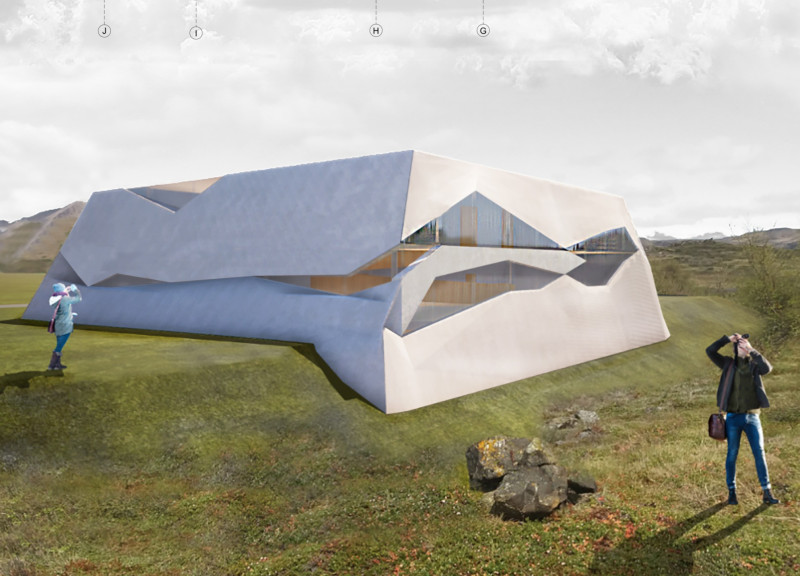5 key facts about this project
The design incorporates a concept centered around a 'CRATER,' which effectively connects the built environment with its natural setting. Located in an area reminiscent of volcanic landscapes, the structure highlights a relationship between its internal spaces and the surrounding scenery. It serves multiple purposes, including exhibitions, dining, and office functions, creating a cohesive experience for users.
Concept and Layout
The central 'CRATER' serves as a focal point, organizing the design around it to enhance visitor engagement. This layout reflects a volcano-concentric approach, guiding movement and interaction within the building. Areas are clearly defined, allowing for exploration while aligning with the external landscape. Visitors can navigate through the spaces with a sense of discovery.
Sustainable Design Features
Energy efficiency is at the core of the project. Natural ventilation is prioritized to maintain comfort, while mechanical systems support this as needed. This balance demonstrates a commitment to reducing environmental impact while ensuring a pleasant indoor climate. The integration of these systems indicates a thoughtful approach to environmental responsibility.
Functional Areas
Different levels serve distinct functions. The Ground Level includes visitor services such as a reception area, cloakroom, and flexible exhibition spaces. These elements promote ease of access and help visitors feel welcomed. On Level 1, a café encourages social interaction, providing a gathering place. Level 2 contains office spaces that cater to professional needs. These functional zones collectively enhance the overall user experience.
Materiality
Materials used in the project include recycled concrete, volcanic stone cover, and greenery cover. Choosing recycled concrete supports sustainability while ensuring structural strength. The volcanic stone cover creates a tactile connection to the environment, grounding the design within its natural setting. Greenery cover contributes not only to aesthetics but also serves environmental purposes, including improving air quality.
Large windows draw in natural light and frame views of the landscape, emphasizing the relationship between the inside and outside. The design encourages visitors to appreciate the surroundings, fostering a strong connection to nature.






















































